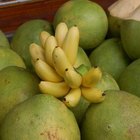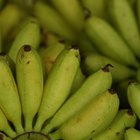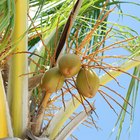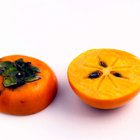
Fruits and vegetables constitute a large part of the Greek diet. The country has rich soil and a large agriculture. Fruits and vegetables are eaten seasonally, and while many have been imported to the country since ancient times, there are several key native ones that play an important role in Greek cuisine.
Figs
As Greeks conquered and colonized in ancient times, they spread figs from their own native regions to the surrounding areas. With thick outer skin and sweet flesh inside, figs have been one of the main fruits of Greek cuisine for millennia. They are used in dishes in either a dry or fresh form, or eaten on their own.
Grapes
Grapes have also been cultivated in Greece since ancient times. They are both eaten as they are and juiced to make beverages, most notably wine. The alcoholic drink created from this fruit was so revered in Greek culture that a deity specifically representing wine was worshipped. Wine is still produced in great quantities throughout the country, and grapes themselves are very common in dishes, as well as eaten on their own.
Artichokes
The artichoke has been in use in Mediterranean cuisine since ancient Greek times. This thistle, which is native to the region, is prized for its tasty center. The artichoke that is the most commonly used throughout the world is a variety actually named "Greek artichoke."
Cucumbers
Cucumbers are another fruit that is well documented as a food staple in ancient Greece. Those grown throughout the region are quite small and have less moisture in their flesh than most of their counterparts. They are used mainly in salads, or eaten plain.
Related Articles

Foods From Rainforest Plants

Information About the Orange Fruit

Information About Strawberries for Kids

How to Eat a Kiwano Horned Melon

List of Tropical Fruits

The History of Butternut Squash

Fruits or Vegetables Starting With X

How to Make Melon Ice Cream

Are Juniper Berries the Same As Capers?

Staple Foods in Greek Culture

How to Julienne Jicama

Which Nuts Are Alkaline Forming?

How to Keep Pomegranate Fresh

How to Parboil Artichokes

Fruits & Vegetables Rich in Potassium ...

Different Types of Fruits & Vegetables

What Are the Benefits of Persimmons?

Different Names for an Eggplant

How Much Fiber Is in a Tangerine?

The Function of Fruits
References
Writer Bio
Based in Kingston, Canada, Samantha Lowe has been writing for publication since 2006. She has written articles for the "Mars' Hill" newspaper and copy for various design projects. Her design and copy for the "Mars' Hill" won the Associated Collegiate Press Pacemaker award in 2008. Lowe holds an Honors BA from Trinity Western University, and a MSc in Occupational Therapy from Queen's University where she is currently doing her PhD.
Photo Credits
greek salad image by Bionic Media from Fotolia.com